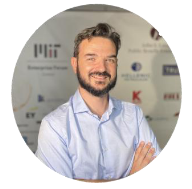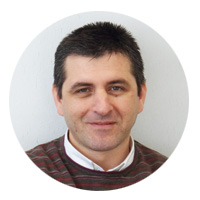


The goal of this project is the development of low-cost and high-efficiency reactors for water and liquid waste purification by the company Greener than Green Technologies A.E. (GtG), via organic pollutant destruction, based on novel photocatalytic materials and coatings, which will be developed by the Theoretical and Physical Chemistry Institute at the National Hellenic Research Foundation (TPCI/NHRF) and will be evaluated in terms of their photocatalytic activity by the Institute of Nanoscience and Nanotechnology (INN) at NCSR “Demokritos”.
04.08.2022 to 31.12.2023

Theoretical and Physical Chemistry Institute (TPCI) | National Hellenic Research Foundation
The group of Laser Structuring and Functionalization of Materials and Devices, led by Dr. Maria Kandyla, belongs to the Theoretical and Physical Chemistry Institute (TPCI) at the National Hellenic Research Foundation and focuses on the interaction of laser light with matter. The objective of the group is the study of light-matter interaction for a) understanding fundamental properties of matter and basic physical mechanisms and b) use laser pulses as a micro/nanofabrication tool, in order to create materials and devices with new functionalities. The group has 20 years of experience on laser processing of a wide range of materials, including semiconductors, metals, polymers, glasses, oxides, etc. We investigate the use of laser pulses as a nanofabrication tool, to create photonic and optoelectronic micro/nanodevices, smart surfaces, chemical sensors, and thin-film photovoltaics.
The group of Low Dimensional Organic-Inorganic Hybrid Perovskites, led by Dr. George Mousdis, focuses to unveil the basic connections between molecular synthesis, crystal structure, and physical properties and to design and develop materials with tailor-made properties, that can be used for the preparation of optoelectronic devices with high performance. Another area of interest is the preparation of metal oxide thin films (TiO2) for sensing and photocatalytic applications.
The groups have extensive experience in the synthesis, characterization, and study of thin metal oxide films, with various metallic elements or oxides, as well as in the micro/nanopatterning of surfaces with laser treatment. The synthesis lab mainly specializes in the fabrication of such materials for use in photocatalysis or gas sensing, as well as transparent conductive oxide (TCO) applications.
Various chemical or physical techniques (e.g., sol-gel, pulsed laser deposition, etc.) are used for the preparation of metal oxide films. In addition, the group specializes on common photocatalytic materials (TiO2, SnOx, etc.), on the preparation of films with other metal oxides or their combinations.
Also, the groups have developed techniques to control the porosity of materials and increase their active surface (e.g., black silicon). For the development and study of these materials, we collaborate with many distinguished laboratories in Greece (NCSR ‘Demokritos’, NTUA) and abroad (France, Germany, Romania, etc.).
Team

Senior Researcher, TPCI/NHRF

Research Director, TPCI/NHRF

Theodoros Giannakis
PhD Candidate, TPCI/NHRF
Contact person
Dr. Maria Kandyla
email: [email protected]
Tel: +30.210.72.73.802
Greener than Green Technologies (GtG)
Greener than Green Technologies (GtG) was founded to transfer technologies from the lab bench into the real word, and address water and wastewater remediation problems with a modern approach and cutting edge innovation. The vision of the company is to aid the industry to achieve a sustainable water use, through continuous research and development of new technologies, processes and ideas.
GtG was founded in 2014, as a start-up, realizing the dream of distinguished scientists to commercially exploit cutting-edge technologies developed in a university environment. The research activity of the company is financed by own funds and by Community resources, with permanent goals of synergies and collaborations with industry and research institutions. Since 2019, GtG has been promoting new and innovative environmental technologies in the Greek market as well as in the broader market of Southeast Europe.
GtG has participated and is participating successfully in two European research programs (H2020, Subsurface water Solutions, SubSol, http://www.subsol.org/ and ULTIMATE –Water Smart Industrial Symbiosis, https://ultimatewater.eu/).
The company consists of members who have high scientific training in the fields of environmental technology and water treatment, with long-term research experience in a variety of physicochemical wastewater treatment methods. It is an emerging endeavor with young scientists combining their research background with experience in realistic design and manufacturing of environmental technology devices.
GtG has research facilities that can accommodate the proposed research project. The company has developed and operates a photocatalytic reactor for homogeneous or heterogeneous photocatalytic decomposition with heterogenous catalyst suspensions. GtG owns analytical devices that can be used to evaluate the efficiency of the materials to be manufactured. These devices include an ultraviolet-visible (UV-Vis) spectrophotometer for the photometric analysis of various inorganic and organic parameters, a Total Organic Carbon (TOC) Analyzer, conductivity meters, pH meters and turbidity meters.
Team

Dimitri Iossifidis, Co-Founder CEO
Chemist, BSc MSc PhD

Charalampos- Philip Iossifidis, Co-Founder, Executive VP
Chemist, BSc MSc MBA

Eri Bizani, Co-Founder, Research Director
Chemist, BSc MSc PhD

Christophoros Christophoridis, Co-Founder, CTO
Chemist, BSc MSc PhD

Myrto Touloupi, Research Specialist
Chemist, BSc MSc
Contact person
Dr. Christophoros Christophoridis,
PhD, MSc, Environmental Chemistry
R&D Director @ Greener than Green Technologies
email: [email protected]
Institute of Nanoscience and Nanotechnology (INN) of NCSR “Demokritos”
The Photo- Catalytic Processes and Environmental Chemistry Group (PHOTOENV) belongs to the Institute of Nanoscience and Nanotechnology of NCSR “Demokritos”. PHOTOENV research activities are focused on Environmental Analytical Chemistry and Advanced Oxidation/Reduction Processes for water purification. The main objectives of the group in the area of environmental analytical chemistry are: (a) the development of advanced analytical procedures based on mass spectrometric techniques for the identification of emerging contaminants of anthropogenic and biogenic origin (e.g. cyanotoxins) and taste & odor compounds, (b) the generation of analytical fingerprints (MS spectral library) that will facilitate future studies of the research community, (c) the understanding of their fate in the aquatic environment and the identification of structure of their transformation products (TPs) and (d) the identification of odorous compounds in water using GC-Olfactometry and sensory analysis. PHOTOENV has also been established as the only accredited (ISO 17025) laboratory for cyanotoxin analysis, as well as a national focal point for cyanotoxins research, with the research team being internationally recognized as pioneers and experts in the field of cyanotoxins analysis.
In the area of Advanced Oxidation/Reduction Processes (AOPs/APRs) for water purification the research activities focuses on photocatalysis, where PHOTOENV has long experience, as well as on homogenous processes such as UV photolysis, UV/Cl2 and sonolysis. Recently, Advanced Reduction Processes have gain significant interest because of their ability to degrade recalcitrant pollutants through reductive pathways. Our group also focused on mechanistic studies related to ARPs using water γ-radiolysis. A set of advanced analytical workflows including LC-HRMS, LC-MS/MS, GC-MS/MS is applied for the monitoring of target contaminants and their transformation products (TPs). Electron Paramagnetic Resonance (EPR) technique is also applied to study the primary reactive species under various experimental conditions.
The main scientific directions are listed below:
Team

Research Director, NCSR "Demokritos"

Senior Researcher, NCSR "Demokritos"

Postdoc, NCSR "Demokritos"

Research Associate, NCSR "Demokritos"
Contact person
Dr Theodoros Triantis
email: [email protected]
Tel.: +30.210.65.03.646
Dr. Maria Kandyla
Senior Researcher, TPCI-NHRF
email: [email protected]
Tel: +30.210.72.73.802